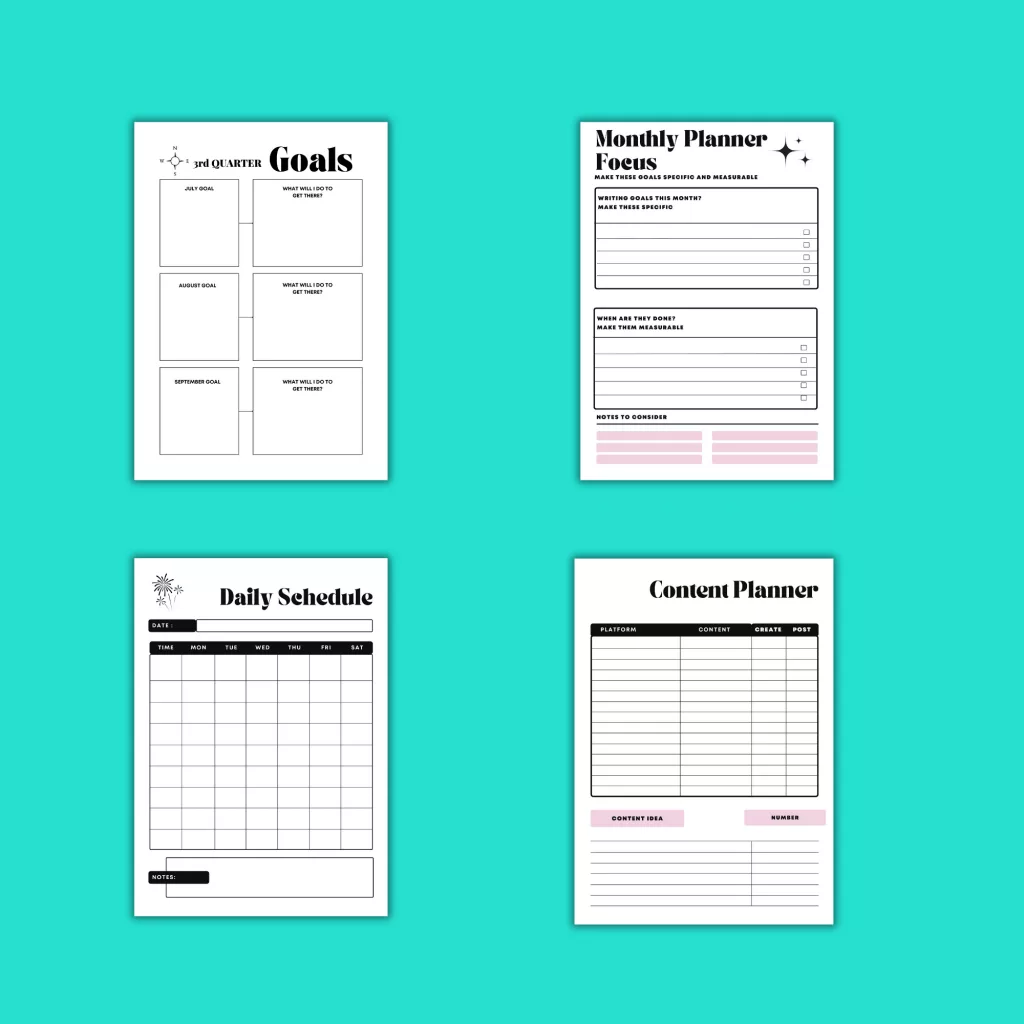Time Blocking Tips for Writers Who Struggle to Find Time to Write
Summary
Looking for more hours in the day to write? Try this. Time blocking and a writing planner. It really works.

Time blocking tips for writers who are like me and need an extra four hours in each day. I say this, because, when the alarm went off this morning, I didn’t hit snooze. I just turned it off…and then went back to sleep.
Luckily, I woke up again.
Cue the mad dash. We weren’t late, but it was chaos. And honestly? Getting back into a routine after time off, or even a weekend these days, feels like walking through treacle.
That half-asleep, half-dreamy state? Bliss. Until reality smacks you with “school run” and “Zoom call in 20.”
But that blurry-brained moment made me realize, I needed a plan. Not a “start in a few weeks” plan.
A now plan. A writing planner and system that gets words on the page today. Not tomorrow. Not next week. Today.
Because writing goals don’t tick themselves off.
If I want to hit my deadlines, which includes finishing the current edit of my next book, I need to take my time, use a writing planner and actually block it out. And here’s where the magic of time blocking and using a dedicated writing planner comes in.
TIME BLOCKING
Cal Newport framed this idea, and it’s a simple and sure-fire way of making the most of every hour you have in your day.
Here’s how it works, and if you have my planner, you’ll see I designed the daily planning sheets for this in particular.
You’ll see in the writing planner it starts with a review. What’s been working in your writing life and what hasn’t?
I always feel that this is a great place to start, as you might find that writing early morning works for you (not me!) and so that would be something that you’d want to keep doing.
The next part is making your goals. I’ve split these up into months, so start wherever you are and whatever month you’re in. Think about what you can do in each month and make a note of it, then, break it down even further and put them in the monthly planner focus.
After you know what you want to achieve in each week, such as how many words you want written, how much content you need to create, etc. Take your day and divide it into hourly chunks using the daily schedule.
Cross out all the time you’re at work, or doing the school run, or making meals etc. and then look at what hour blocks of time you have left.
For me, it looks like a couple of hours before work, a couple after and an hour in the middle around lunch time.
Write out what you’ll do in each of those hours and here’s the key: keep it to one specific task. Easy.
But the hard part is when you actually come to doing it. Be strict with yourself. Work at what you’ve planned in those hours and nothing else.
If you haven’t got to your word count by the end of the hour, or created your content, or written your newsletter or whatever, stop.
Whatever you haven’t got done, goes on the sheet for the next day.
Time block it in.
This works because instead of leaving the time you have open-ended, to do a bit of writing here, create some kind of content or maybe answer a few emails, you focus on one task.
It helps you prioritize and means you stop the mind-monkeys that ask you to juggle everything at the same time.
WORKING TO CONSTRAINTS
When doing my writing review, of the year so far, I found that writing sprints worked best for me.
I got more done when I only had a finite amount of time to write in, than I did when I had, say, a full afternoon.
I think it was because I was forced to focus. I didn’t have the luxury of daydreaming out of the window or picking up my phone. I had to get that stuff done!
There was also something psychologically appealing about the urgency of it. Racing against the clock is a great motivator.
I knew that after an hour; it was over.
I wouldn’t have to keep going and that seemed to fuel my creativity, knowing that it wasn’t an endless time measured in when I achieved the goal.
The pomodoro technique is a time management tool that embraces this and one that I fully subscribe to. Writing sprints for 25 minutes works great for me.
So that’s how I’m tackling all of my writing projects. I’ll let you know if I find a new hack, or if I change things up.
And you can grab a copy of my writing planner here. It’s a 75 page planner to help you time block for writing and perfect for authors, NaNoWriMo prep, writing resolutions and any other writing project that you feel is getting away from you!








